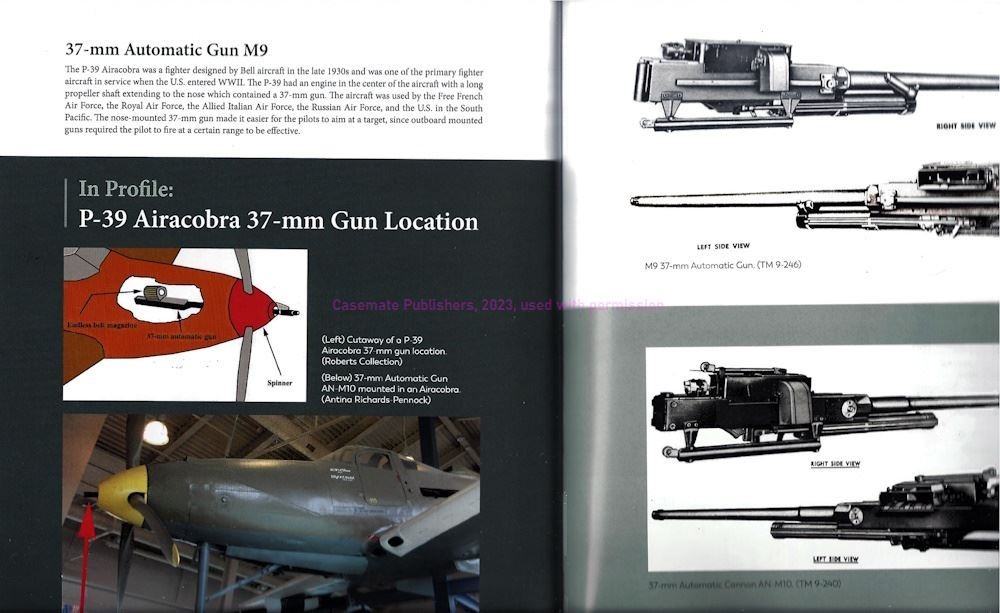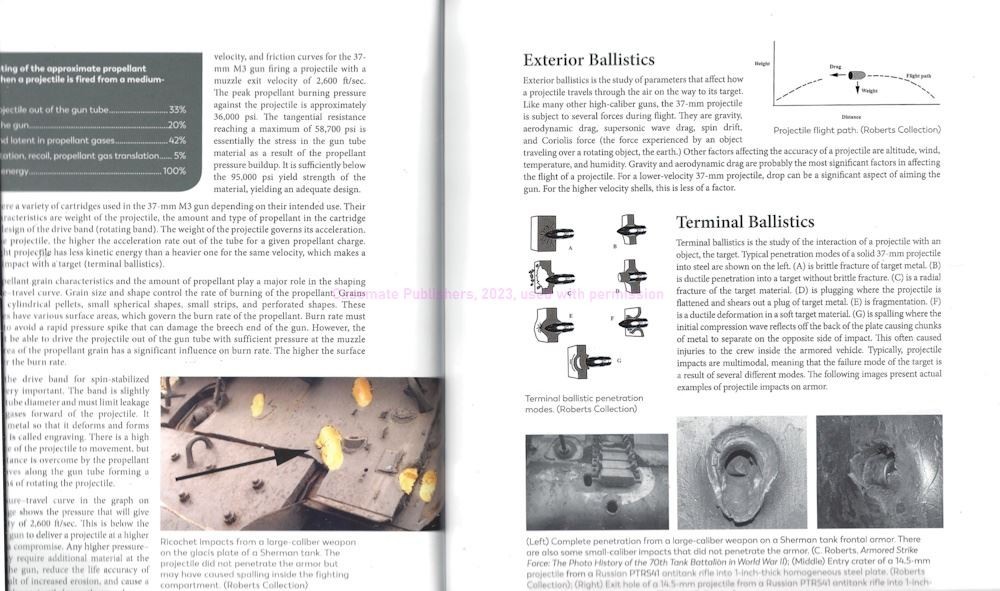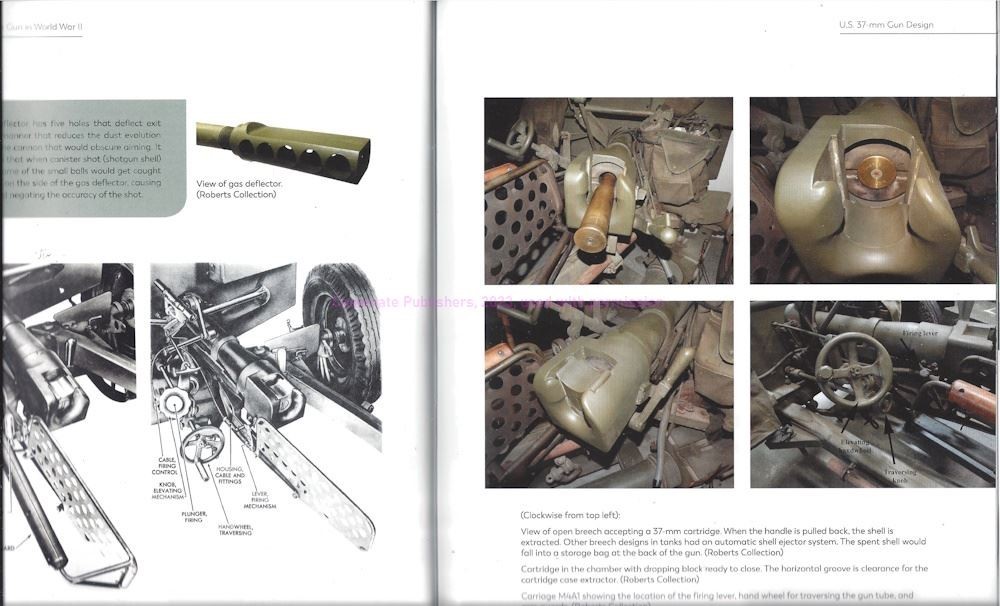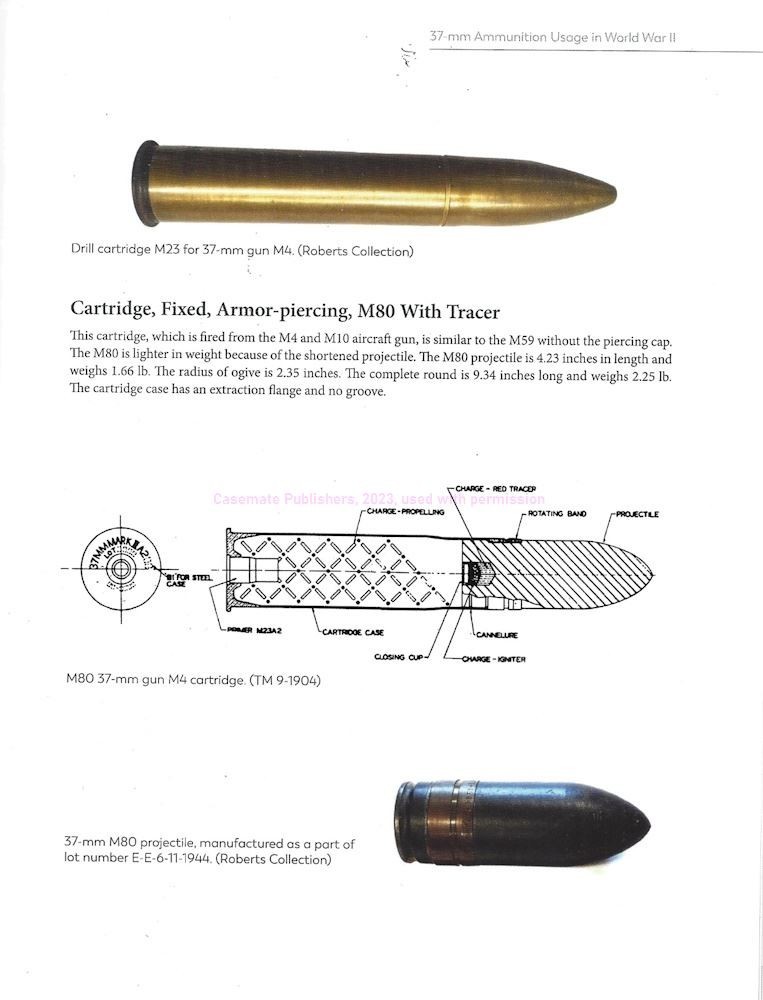
Introduction
The U.S. 37-mm Gun in World War II is an 8x10 hardback 192-page book by Charles C. Roberts Jr., catalogued as IBSN 9781636242521. It is also available as a digital download from several vendors.
The author presents the origins and need for this weapon, the basis for its development, its place in the US Army Ordnance Department, deployment and effectiveness throughout the war.
Content
Timeline of Events
Introduction
Chapter 1: Development of the 37-mm Gun
Chapter 2: U.S. 37-mm Gun Design
Chapter 3: 37-mm Ammunition Usage in World War II
Chapter 4: Usage in Armored Vehicles in World War II
Chapter 5: Usage in Non-Armored Vehicles and Aircraft in World War II
References
Appendix A: Drawings of the U.S. 37-mm Gun [and M4 carriage Components - Ed.]
Appendix B: 37-mm Ballistic Data
Index
Many modelers will be excited with this book, I have no doubt. A quick search reveals several 1/35 M3 anti-tank guns (ATG), and the gun is also available in 1/24 to 1/87, maybe even smaller. There is even one in Dragon's 1/6 range. (I did not search for reference or modeling books concerning the M3 ATG.) Regardless, I am impressed with the thoroughness of research and detail in this book. The author includes excerpts and images from over two dozen U.S. Army technical manuals and other official sources (chronicled in Further Reading, not included in the above listed on-line contents).
While probably de minimus to most of us reading this review, the contents page of the book is somewhat different than what is listed on the website, which does not mention Timeline of Events. Beginning with nineteenth century Russian exploding musket balls, we learn about developments of heavier firepower for infantry, i.e., Model M1916 37-mm Gun. It continues to America's realization of the need for an ATG, especially after observations of such weapons during the Spanish Civil War. The story continues through the design and development of the gun, including influences such as the Swedish Bofors 37-mm gun, and 37mm guns of Germany, Japan, Poland, Russia, and Czechoslovakia. Like the M3 family, foreign weapons are accompanied with callouts, sidebars, and data tables. Combat history successes and failures are recounted in general. Technical characteristics of the weapon are detailed, i.e., subjects Interior Ballistics of the 37-mm M3 Gun, and Exterior and Terminal Ballistics. Components are also presented, a few of which are:
- Breech
- Telescopes
- M3 and M3A1 barrels
- Gas deflectors.
Next the book explores mounting the M3 gun onto vehicles (have you ever heard of the T8 "Swamp Buggy"?) and vessels, into tanks (M5 and M6 variants) and aircraft (M4, M9, and M10), and attempts to make it more man-portable (T32, T33, and T62). I am surprised by some of the vehicles packing the 37mm and now plan to models some of them. Armored vehicles covered are the:
- M2A4
- M3 and M5 Stuart
- M33 Gun Motor Carriage and "Burma Jeep"
- LVT
- M8
- M22
- M3 "Lee/Grant"
- Staghound Armored car
- Half-tracks and scout cars
- Humbler Mk IV
- Experimentals and prototypes T13, T19, T27, M38.
37-mm Gun With Non-Armored Vehicles, Aircraft, and Vessels in World War II covers the M3 and M1A2 Automatic Anti-aircraft Gun mounted in/on the M4 Towed Mount and:
- T2
- T8
- M6
- T13 and T14
- T33
- P-39 Airacobra and P-63 Kingcobra
- PT Boats.
Ammunition receives the same attention, even reviewing spigot grenade designs. Ballistics, shot and warheads, metallurgy, propellant charge weight, and many other important characteristics are noted.
Those chapters are highly informative. Furthermore, modelers will find a bonanza of super-detailing references in Appendix A: Drawings of the U.S. 37-mm Gun and M4 carriage Components, with technical drawings reproduced from Ordnance Office, U.S. War Department. Likewise, Appendix B: 37-mm Ballistic Data treats us to 16 pages of official performance data.
Photographs, Artwork, Graphics
This Casemate Illustrated Special lives up to the series name. Only the page Introduction lacks a photographs, artwork or graphics. I did not count each image but there are 192 pages in this book and many pages feature more than one image. All are explained with captions or more detailed narratives.
Photographs span the gamut of studio quality exposures to somewhat blurry or misprocessed black-and-white photos. The image gallery is intensified with dozens of color photos of 37mm guns and ammunition in museums or collections. These photos are high-quality and many focus on specific components, further enhancing the value of this book for modelers.
It appears several illustrations are specifically for this book. They are simple yet convey a wealth of reference material in support of the text.
Most of the graphics are tables, charts and graphs are reproduced from technical manuals and official reports. Dozens of callouts or sidebar emphasize key subjects.
Note - some scans are partials of two pages; if you like or do not like these images, drop me a PM.






Conclusion
Anti-tank guns such as the FlaK 18, PaK 43, ZiS-2 and -3, 17-Pounder and 90mm M3 are amazing and fun to read about. However, personally I am more interested in the ATGs that had a harder time defeating enemy armor. Thus, I am pleased that Casemate will release The U.S. 37-mm Gun in World War II this November.
Impressive is the amount of detail - photographic and textual - available for U.S. 37mm modelers and historians. The wealth of technical imagery will be invaluable when I try to super-detail one of these guns. The book also introduced me to a few vehicles with which I was not familiar.
I am enthusiastic about this book and recommend it.
Please remember to mention to Casemate and retailers that you saw this book here - on Armorama.



























